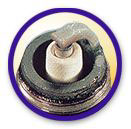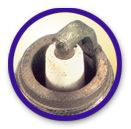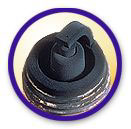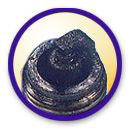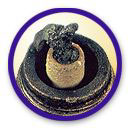|
Tech Notes: |
||||||||||||||||||||||||||||||||||||||||||||||
|
||||||||||||||||||||||||||||||||||||||||||||||
|
|
||||||||||||||||||||||||||||||||||||||||||||||
|
Spark plugs are one of the most misunderstood components of an engine.
Numerous questions have surfaced over the years, leaving many people
confused. Spark plug reading is a science all it's own, but there are
some rules of thumb. Spark plugs are the "window" into your engine (your only eyewitness to the combustion chamber), and can be used as a valuable diagnostic tool. Like a patient's thermometer, the spark plug displays symptoms and conditions of the engine's performance. The experienced tuner can analyze these symptoms to track down the root cause of many problems, or to determine air/fuel ratios. SPARK PLUG BASICS: The spark plug has two primary functions: |
||||||||||||||||||||||||||||||||||||||||||||||
|
||||||||||||||||||||||||||||||||||||||||||||||
|
Spark plugs transmit electrical energy that turns fuel into working
energy. A sufficient amount of voltage must be supplied by the ignition
system to cause it to spark across the spark plug's gap. This is called
"Electrical Performance." The temperature of the spark plug's firing end must be kept low enough to prevent pre-ignition, but high enough to prevent fouling. This is called "Thermal Performance", and is determined by the heat range selected. It is important to remember that spark plugs do not create heat, they can only remove heat. The spark plug works as a heat exchanger by pulling unwanted thermal energy away from the combustion chamber, and transferring the heat to the engine's cooling system. The heat range is defined as a plug's ability to dissipate heat. |
||||||||||||||||||||||||||||||||||||||||||||||
|
||||||||||||||||||||||||||||||||||||||||||||||
|
|
||||||||||||||||||||||||||||||||||||||||||||||
| Return to Tech Page | ||||||||||||||||||||||||||||||||||||||||||||||
